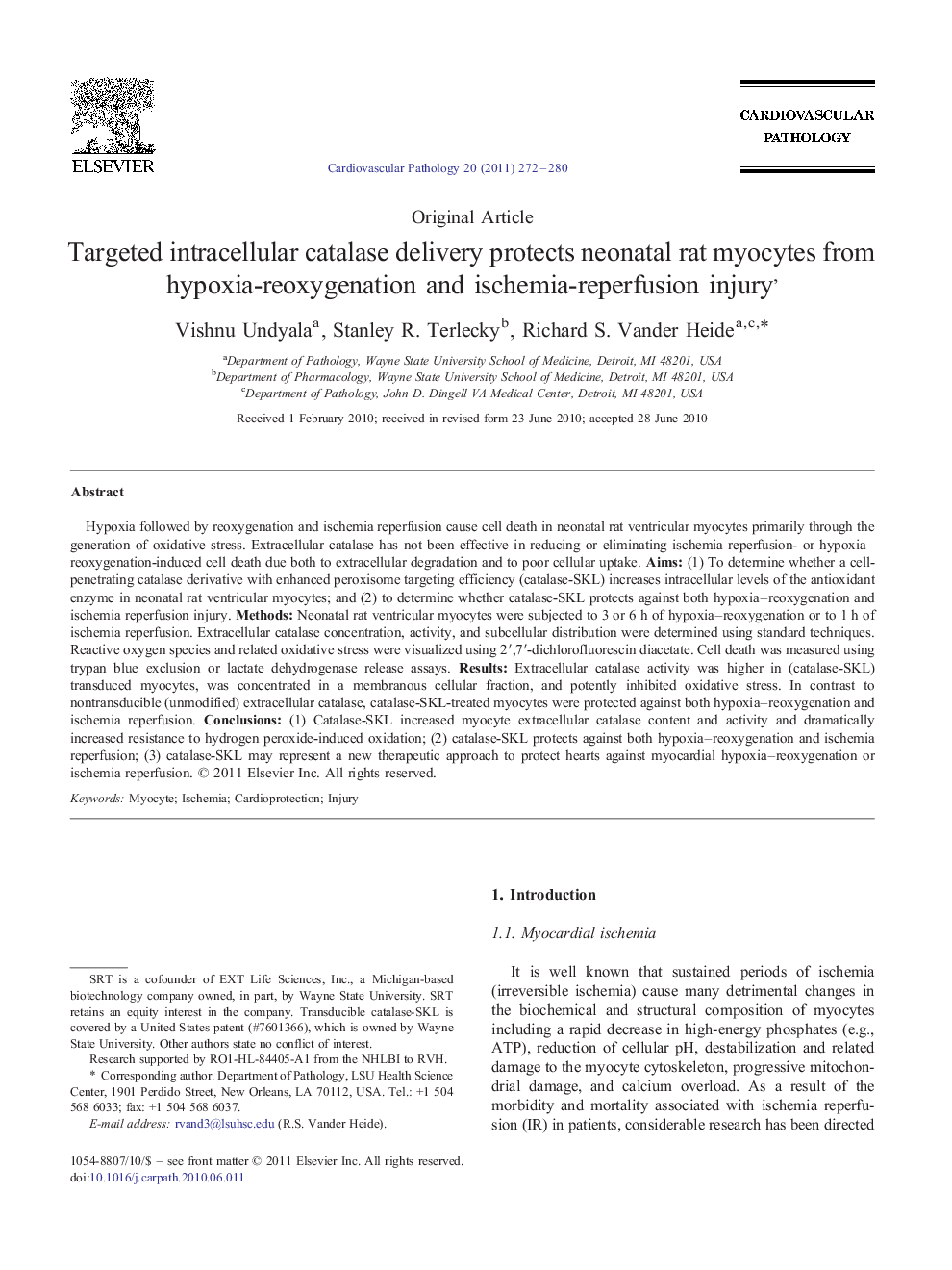| Article ID | Journal | Published Year | Pages | File Type |
|---|---|---|---|---|
| 2899318 | Cardiovascular Pathology | 2011 | 9 Pages |
Hypoxia followed by reoxygenation and ischemia reperfusion cause cell death in neonatal rat ventricular myocytes primarily through the generation of oxidative stress. Extracellular catalase has not been effective in reducing or eliminating ischemia reperfusion- or hypoxia–reoxygenation-induced cell death due both to extracellular degradation and to poor cellular uptake.Aims(1) To determine whether a cell-penetrating catalase derivative with enhanced peroxisome targeting efficiency (catalase-SKL) increases intracellular levels of the antioxidant enzyme in neonatal rat ventricular myocytes; and (2) to determine whether catalase-SKL protects against both hypoxia–reoxygenation and ischemia reperfusion injury.MethodsNeonatal rat ventricular myocytes were subjected to 3 or 6 h of hypoxia–reoxygenation or to 1 h of ischemia reperfusion. Extracellular catalase concentration, activity, and subcellular distribution were determined using standard techniques. Reactive oxygen species and related oxidative stress were visualized using 2′,7′-dichlorofluorescin diacetate. Cell death was measured using trypan blue exclusion or lactate dehydrogenase release assays.ResultsExtracellular catalase activity was higher in (catalase-SKL) transduced myocytes, was concentrated in a membranous cellular fraction, and potently inhibited oxidative stress. In contrast to nontransducible (unmodified) extracellular catalase, catalase-SKL-treated myocytes were protected against both hypoxia–reoxygenation and ischemia reperfusion.Conclusions(1) Catalase-SKL increased myocyte extracellular catalase content and activity and dramatically increased resistance to hydrogen peroxide-induced oxidation; (2) catalase-SKL protects against both hypoxia–reoxygenation and ischemia reperfusion; (3) catalase-SKL may represent a new therapeutic approach to protect hearts against myocardial hypoxia–reoxygenation or ischemia reperfusion.
